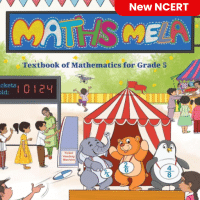Class 5 Exam > Class 5 Questions > Diwali is a famous festival of India. In this...
Start Learning for Free
Diwali is a famous festival of India. In this festival people burn crackers. When these crackers burn, they turn into ashes. What is such burning of crackers an example of?
- a)Chemical change
- b)Physical change
- c)Both physical and chemical change
- d)None of the above
Correct answer is option 'A'. Can you explain this answer?
Most Upvoted Answer
Diwali is a famous festival of India. In this festival people burn cra...
**Chemical Change**
Burning crackers during Diwali is an example of a chemical change. Let's understand why:
**Definition of Chemical Change:**
A chemical change, also known as a chemical reaction, is a process that results in the formation of new substances with different properties from the original substances involved. During a chemical change, the chemical composition of the substances involved is altered, and new substances are formed.
**Explanation:**
When crackers are burned during Diwali, a series of chemical reactions take place. Let's break it down:
1. **Combustion Reaction:** When a cracker is ignited, it undergoes a combustion reaction. This reaction involves the rapid combination of a substance (in this case, the cracker) with oxygen from the air to produce heat, light, and new substances. The primary reactants involved in the combustion of crackers are the chemicals present in them, such as sulfur, potassium nitrate, and carbon.
2. **Oxidation:** The combustion reaction of crackers is an oxidation reaction because oxygen is being added to the chemicals present in the crackers. This leads to the production of new compounds, such as sulfur dioxide (SO2), carbon dioxide (CO2), water (H2O), and various other gases depending on the specific composition of the cracker.
3. **Release of Energy:** During the combustion reaction, a significant amount of energy is released in the form of heat and light. This is why we see a bright display of colors and hear loud sounds when crackers are burned.
4. **Irreversibility:** Once the crackers are burned, it is not possible to reverse the chemical changes that have occurred. The original substances are transformed into new substances, and there is no simple way to revert them back to their original form.
Based on the above explanation, it is clear that the burning of crackers during Diwali involves chemical changes. Therefore, option 'A' - Chemical change is the correct answer.
Burning crackers during Diwali is an example of a chemical change. Let's understand why:
**Definition of Chemical Change:**
A chemical change, also known as a chemical reaction, is a process that results in the formation of new substances with different properties from the original substances involved. During a chemical change, the chemical composition of the substances involved is altered, and new substances are formed.
**Explanation:**
When crackers are burned during Diwali, a series of chemical reactions take place. Let's break it down:
1. **Combustion Reaction:** When a cracker is ignited, it undergoes a combustion reaction. This reaction involves the rapid combination of a substance (in this case, the cracker) with oxygen from the air to produce heat, light, and new substances. The primary reactants involved in the combustion of crackers are the chemicals present in them, such as sulfur, potassium nitrate, and carbon.
2. **Oxidation:** The combustion reaction of crackers is an oxidation reaction because oxygen is being added to the chemicals present in the crackers. This leads to the production of new compounds, such as sulfur dioxide (SO2), carbon dioxide (CO2), water (H2O), and various other gases depending on the specific composition of the cracker.
3. **Release of Energy:** During the combustion reaction, a significant amount of energy is released in the form of heat and light. This is why we see a bright display of colors and hear loud sounds when crackers are burned.
4. **Irreversibility:** Once the crackers are burned, it is not possible to reverse the chemical changes that have occurred. The original substances are transformed into new substances, and there is no simple way to revert them back to their original form.
Based on the above explanation, it is clear that the burning of crackers during Diwali involves chemical changes. Therefore, option 'A' - Chemical change is the correct answer.

|
Explore Courses for Class 5 exam
|

|
Question Description
Diwali is a famous festival of India. In this festival people burn crackers. When these crackers burn, they turn into ashes. What is such burning of crackers an example of?a)Chemical changeb)Physical changec)Both physical and chemical changed)None of the aboveCorrect answer is option 'A'. Can you explain this answer? for Class 5 2025 is part of Class 5 preparation. The Question and answers have been prepared according to the Class 5 exam syllabus. Information about Diwali is a famous festival of India. In this festival people burn crackers. When these crackers burn, they turn into ashes. What is such burning of crackers an example of?a)Chemical changeb)Physical changec)Both physical and chemical changed)None of the aboveCorrect answer is option 'A'. Can you explain this answer? covers all topics & solutions for Class 5 2025 Exam. Find important definitions, questions, meanings, examples, exercises and tests below for Diwali is a famous festival of India. In this festival people burn crackers. When these crackers burn, they turn into ashes. What is such burning of crackers an example of?a)Chemical changeb)Physical changec)Both physical and chemical changed)None of the aboveCorrect answer is option 'A'. Can you explain this answer?.
Diwali is a famous festival of India. In this festival people burn crackers. When these crackers burn, they turn into ashes. What is such burning of crackers an example of?a)Chemical changeb)Physical changec)Both physical and chemical changed)None of the aboveCorrect answer is option 'A'. Can you explain this answer? for Class 5 2025 is part of Class 5 preparation. The Question and answers have been prepared according to the Class 5 exam syllabus. Information about Diwali is a famous festival of India. In this festival people burn crackers. When these crackers burn, they turn into ashes. What is such burning of crackers an example of?a)Chemical changeb)Physical changec)Both physical and chemical changed)None of the aboveCorrect answer is option 'A'. Can you explain this answer? covers all topics & solutions for Class 5 2025 Exam. Find important definitions, questions, meanings, examples, exercises and tests below for Diwali is a famous festival of India. In this festival people burn crackers. When these crackers burn, they turn into ashes. What is such burning of crackers an example of?a)Chemical changeb)Physical changec)Both physical and chemical changed)None of the aboveCorrect answer is option 'A'. Can you explain this answer?.
Solutions for Diwali is a famous festival of India. In this festival people burn crackers. When these crackers burn, they turn into ashes. What is such burning of crackers an example of?a)Chemical changeb)Physical changec)Both physical and chemical changed)None of the aboveCorrect answer is option 'A'. Can you explain this answer? in English & in Hindi are available as part of our courses for Class 5.
Download more important topics, notes, lectures and mock test series for Class 5 Exam by signing up for free.
Here you can find the meaning of Diwali is a famous festival of India. In this festival people burn crackers. When these crackers burn, they turn into ashes. What is such burning of crackers an example of?a)Chemical changeb)Physical changec)Both physical and chemical changed)None of the aboveCorrect answer is option 'A'. Can you explain this answer? defined & explained in the simplest way possible. Besides giving the explanation of
Diwali is a famous festival of India. In this festival people burn crackers. When these crackers burn, they turn into ashes. What is such burning of crackers an example of?a)Chemical changeb)Physical changec)Both physical and chemical changed)None of the aboveCorrect answer is option 'A'. Can you explain this answer?, a detailed solution for Diwali is a famous festival of India. In this festival people burn crackers. When these crackers burn, they turn into ashes. What is such burning of crackers an example of?a)Chemical changeb)Physical changec)Both physical and chemical changed)None of the aboveCorrect answer is option 'A'. Can you explain this answer? has been provided alongside types of Diwali is a famous festival of India. In this festival people burn crackers. When these crackers burn, they turn into ashes. What is such burning of crackers an example of?a)Chemical changeb)Physical changec)Both physical and chemical changed)None of the aboveCorrect answer is option 'A'. Can you explain this answer? theory, EduRev gives you an
ample number of questions to practice Diwali is a famous festival of India. In this festival people burn crackers. When these crackers burn, they turn into ashes. What is such burning of crackers an example of?a)Chemical changeb)Physical changec)Both physical and chemical changed)None of the aboveCorrect answer is option 'A'. Can you explain this answer? tests, examples and also practice Class 5 tests.

|
Explore Courses for Class 5 exam
|

|
Signup for Free!
Signup to see your scores go up within 7 days! Learn & Practice with 1000+ FREE Notes, Videos & Tests.


















